Trimming around a dog's eyes is an essential part of grooming for many breeds, as it helps prevent eye irritation, matting, and potential eye infections. However, it requires careful technique and the right tools to ensure safety and effectiveness.
Having a step-by-step guide and understanding the importance of trimming around a dog's eyes is crucial for every pet owner. Here is a comprehensive overview of the process, along with the necessary tools and precautions to consider.
Understanding why trimming around a dog's eyes is important, you will learn about the tools and supplies needed for the task. These include dog-safe trimming scissors, a fine-toothed comb, dog-safe grooming clippers (if necessary), and styptic powder to stop bleeding if accidental cuts occur.
The step-by-step guide covers all the necessary steps for a successful trimming session. This includes preparing the environment, calming and comforting your dog, gently combing the fur around the eyes, using scissors to trim excess fur, optionally using grooming clippers for longer fur, observing safety measures, and rewarding your dog for their cooperation.
Tips and precautions are provided to ensure a smooth and safe trimming experience. These include taking it slow and being gentle, avoiding trimming too close to the eyes, using styptic powder for any bleeding, and seeking professional help if unsure or uncomfortable.
Lastly, common mistakes to avoid are highlighted, such as rushing the process, using improper tools, trimming too close to the eyes, and neglecting regular maintenance.
By following these guidelines and being aware of the importance of trimming around a dog's eyes, you can ensure your furry friend's comfort, hygiene, and overall well-being.
Key takeaways:
- Trimming around a dog's eyes is important to maintain proper hygiene and prevent eye irritation or infections.
- Tools needed include dog-safe trimming scissors, a fine-toothed comb, dog-safe grooming clippers, and styptic powder.
- Steps to trim around a dog's eyes include preparing the environment, calming the dog, gently combing the fur, using scissors to trim excess fur, optional use of grooming clippers, observing safety, and rewarding the dog.
Why is Trimming Around a Dog's Eyes Important?
Trimming around a dog's eyes is incredibly important for several reasons. First and foremost, long hair around a dog's eyes can obstruct their vision, which puts them at risk for accidents and injuries. Additionally, this excess hair can lead to irritation, itching, and even infections if dirt or debris becomes trapped in the fur. Moreover, the accumulation of bacteria in the long hair around the eyes can create a breeding ground for harmful microorganisms, significantly increasing the chances of eye infections. Thus, by ensuring that the area around a dog's eyes is neatly trimmed, pet owners can contribute to their pets' safety, comfort, and overall eye health.
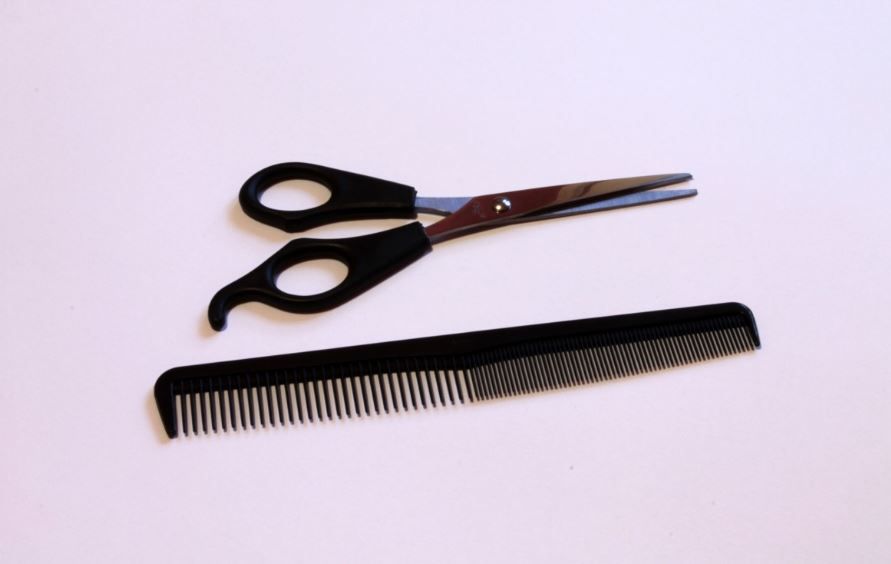
Tools and Supplies Needed for Trimming Around a Dog's Eyes
When it comes to trimming around a dog's eyes, having the right tools and supplies is key. In this section, we'll cover the essentials you'll need for the job. From dog-safe trimming scissors and fine-toothed combs to dog-safe grooming clippers and styptic powder, we've got you covered. With these tools at your disposal, you'll be equipped to safely and effectively trim away excess hair without risking any harm to your furry friend's delicate eyes.
1. Dog-Safe Trimming Scissors
Dog-safe trimming scissors are an essential tool for trimming around a dog's eyes. Here are some key considerations when choosing the best scissors for this task:
Safety: Look for dog-safe scissors with rounded tips to prevent accidental poking or injury to the eyes.
Quality: Opt for high-quality scissors made from durable materials that stay sharp for precise and efficient trimming.
Size: Select scissors that are the right size for your dog's breed and the area you want to trim.
Ergonomics: Choose scissors with comfortable handles that provide a good grip for steady and controlled cutting.
Versatility: Consider scissors that can be used for other grooming tasks, such as trimming hair on the paws or ears.
The importance of trimming around a dog's eyes dates back centuries. Ancient Egyptians believed that giving their dogs a clear line of vision enhanced their connection to the spiritual world. They used handmade scissors made from copper or bronze to carefully trim the fur around their dogs' eyes, ensuring clear sight and a deep bond between dog and owner. Today, the tradition continues with dog-safe trimming scissors designed to prioritize safety, precision, and the overall well-being of our furry friends.
2. Fine-Toothed Comb
Using a fine-toothed comb, like the one mentioned earlier, is absolutely essential when it comes to trimming the fur around a dog's eyes. Not only does this specialized tool help to separate and untangle the fur, but it also makes the trimming process much easier and more even. By using a fine-toothed comb specifically designed for grooming dogs, you ensure that the teeth spacing is appropriate and safe for the delicate eye area of your furry companion. Even after the trimming is complete, it's a good idea to give your dog's fur a once-over with the comb to make sure there aren't any stray hairs left behind. Just remember to take your time and use gentle, slow movements to avoid pulling on the fur or causing any discomfort for your dog.
3. Dog-Safe Grooming Clippers
When trimming around a dog's eyes, it is crucial to use dog-safe grooming clippers. These specially designed clippers are specifically made for dogs and possess features that ensure their safety and effectiveness. Here are some essential considerations when selecting dog-safe grooming clippers:
- Quality: Invest in high-quality clippers that are crafted with durable materials and possess sharp blades to guarantee precise and safe trimming.
- Safety features: Look for clippers that have safety guards or rounded tips to prevent accidental cuts or injury to your dog's sensitive eye area.
- Noise level: Choose clippers that operate quietly to minimize any potential stress or anxiety for your dog during the grooming process.
- Ease of use: Opt for clippers that are lightweight and ergonomically designed for comfortable handling, making it easier to maneuver around your dog's eyes.
- Compatibility: Ensure that the clippers are suitable for your dog's specific coat type and length, as different clippers may be more suitable for different breeds or hair textures.
By considering these factors and utilizing dog-safe grooming clippers, you can effectively and safely trim around your dog's eyes, ensuring they stay clean and free from irritation.
4. Styptic Powder
Styptic powder is a crucial tool for trimming around a dog's eyes. It is exceptionally helpful in controlling bleeding in the event of accidental nicks or cuts during the grooming process. Here are some essential points to note about styptic powder:
- Stops bleeding: Styptic powder contains an ingredient called ferric subsulfate that aids in blood clotting, quickly putting a halt to bleeding.
- Easy application: It can be directly applied to the cut or wound using a cotton swab or applicator included with the powder.
- Safe for dogs: Styptic powder is specifically formulated for use on dogs and is completely safe when utilized as directed.
- Multi-purpose: It can also be employed to stop bleeding from nail trims or minor cuts on other parts of the dog's body.
Remember to use styptic powder cautiously and only when necessary to ensure the safety and well-being of your furry friend.

Step-by-Step Guide on How to Trim Around a Dog's Eyes
If you've ever wondered how to groom your furry friend's delicate eye area, we've got you covered with a step-by-step guide. From creating a calm and comfortable environment to using the right tools, we'll walk you through the process. Along the way, we'll share tips on avoiding common mistakes like trimming too close to the eyes and using improper tools. So, let's dive in and learn how to trim around a dog's eyes like a pro!
Step 1: Prepare the Environment
Before trimming around a dog's eyes, it is crucial to prepare the environment to ensure safety and comfort for both you and the dog. Here is a step-by-step guide on how to properly prepare the environment for trimming:
- Find a quiet and well-lit area: Choose a space where your dog feels calm and secure, away from distractions and noise.
- Gather the necessary supplies: Collect all the tools and supplies you will need, such as dog-safe trimming scissors, a fine-toothed comb, grooming clippers, and styptic powder.
- Calm and comfort your dog: Before starting, take a few moments to soothe your dog and help them relax. Offer treats or verbal praise to create a positive association with the grooming process.
- Secure your dog: Use a leash or have someone hold your dog gently to prevent any sudden movements or escapes during the trimming process.
- Protect the eyes: Use a dog-safe eye lubricant or ointment to prevent irritation and protect the eyes from loose hair and scissors.
- Clear the area: Remove any objects or obstacles nearby that could cause accidents or distractions during the process.
Preparing the environment properly will create a calm and safe space for trimming around your dog's eyes.
Step 2: Calm and Comfort Your Dog
- Ensure a quiet and comfortable environment to help your dog relax.
- Calm and comfort your dog by gently petting and reassuring it to alleviate any anxiety or fear.
- Speak soothingly and use a calm tone of voice to create a peaceful atmosphere.
- Offer treats or a favorite toy as a distraction and positive reinforcement.
- Take breaks if your dog becomes restless or uncomfortable.
- Adjust your approach based on your dog's individual needs and temperament.
- Always prioritize your dog's safety and well-being.
Step 3: Gently Comb the Fur Around the Eyes
Gently combing the fur around a dog's eyes is an important step in trimming to ensure safety and comfort for the dog. Here is a step-by-step guide:
- Prepare the environment by choosing a quiet, well-lit area.
- Calm and comfort your dog to create a relaxed atmosphere.
- Gently comb the fur around the eyes using a fine-toothed comb to remove any tangles or matting.
- Be cautious and gentle to avoid pulling or causing discomfort to the dog.
- Continue combing until the fur is smooth and easier to trim.
- Proceed to the next steps of using scissors or grooming clippers for trimming, if necessary.
- Observe the dog's body language and ensure their safety throughout the process.
- Reward and praise your dog for their cooperation and patience.
Step 4: Use Scissors to Trim Excess Fur
- Prepare the environment by choosing a well-lit, calm, and comfortable area.
- Calm and comfort your dog by offering treats and using a soothing tone of voice.
- Gently comb the fur around the eyes to ensure it is tangle-free and easy to trim.
- Use scissors with rounded tips to carefully trim excess fur, making small and precise cuts.
- For longer fur, you can use dog-safe grooming clippers to achieve a more even trim.
- Observe your dog's behavior and ensure their safety throughout the grooming process.
- Remember to reward and praise your dog for remaining calm and cooperative.
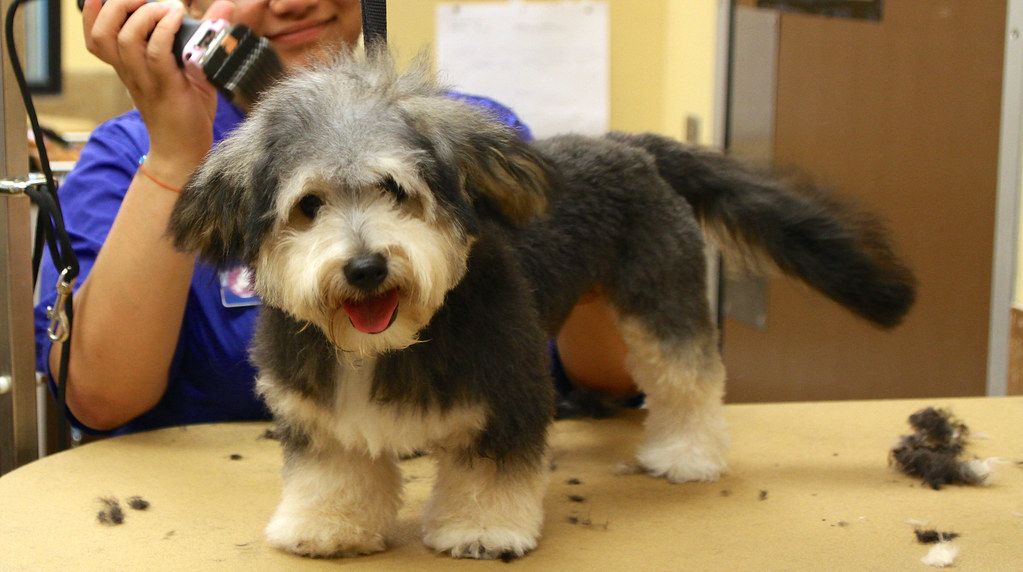
Step 5: Optional - Use Grooming Clippers for Longer Fur
- Make sure the clippers are dog-safe and specially designed for grooming around sensitive areas.
- Ensure your dog is calm and comfortable before proceeding.
- Gently comb the fur around the eyes to remove any tangles or mats.
- Using the clippers, carefully trim the excess fur, following the natural contour of the eye.
- Optional - Use grooming clippers for longer fur around a dog's eyes.
- Be cautious and avoid getting too close to the eyes to prevent any injury.
- Observe your dog throughout the process to ensure their safety and well-being.
- Reward and praise your dog for their cooperation and patience.
This optional step can help achieve a neater and more polished look around your dog's eyes, especially for breeds with longer fur. Remember to always prioritize your dog's safety and comfort when grooming.
Step 6: Observe and Ensure Safety
- Watch your dog's behavior closely during the trimming process to ensure their comfort and safety.
- Keep an eye out for any signs of distress or discomfort, such as whining, pulling away, or showing signs of fear.
- If your dog becomes agitated or resistant, take a break and try again later to avoid causing them undue stress.
- Be cautious not to accidentally poke or harm your dog's eyes with the scissors or clippers.
- Make sure to have styptic powder on hand in case of any accidental cuts or bleeding.
Trimming around a dog's eyes has been practiced for centuries to maintain their hygiene and prevent eye irritations. Ancient Egyptians, for example, used to carefully trim the hair around their dogs' eyes to protect them from sand and debris in the desert environment. This practice has evolved over time, with modern-day pet owners prioritizing the safety and comfort of their furry companions during the grooming process.
Step 7: Reward and Praise Your Dog
Rewarding and praising your dog is an important step after trimming around their eyes. Here is a list of steps to follow while rewarding and praising your dog:
1. Offer treats: Reward your dog with small, tasty treats immediately after the grooming session to positively reinforce their behavior.
2. Use verbal praise: Shower your dog with verbal praise, using a happy and upbeat tone to let them know they did a great job.
3. Provide physical affection: Petting and cuddling your dog can further reinforce their positive experience and create a stronger bond between you.
4. Playtime: Engage in some playtime with your dog as a reward for their cooperation during the grooming process.
| Dogs respond well to positive reinforcement, and rewarding them after trimming around their eyes can help them associate the experience with something enjoyable and build their trust. |
Take It Slow and Be Gentle
Trimming around a dog's eyes requires patience, gentleness, and the right tools. Here are some tips to make the process easier:
- Prepare: Gather scissors designed for pet grooming, dog treats for rewards, and a calm environment.
- Take it slow: Start by gradually introducing your dog to having their face touched and the grooming tools near their eyes.
- Be gentle: Use small, controlled snips, making sure to keep the scissors parallel to the fur and away from the eyes.
- Reward and praise: After each successful trimming session, remember to reward your dog with treats and praise to reinforce positive associations.
Fact: Taking it slow and being gentle when trimming around your dog's eyes can help maintain their hygiene and prevent eye irritations.
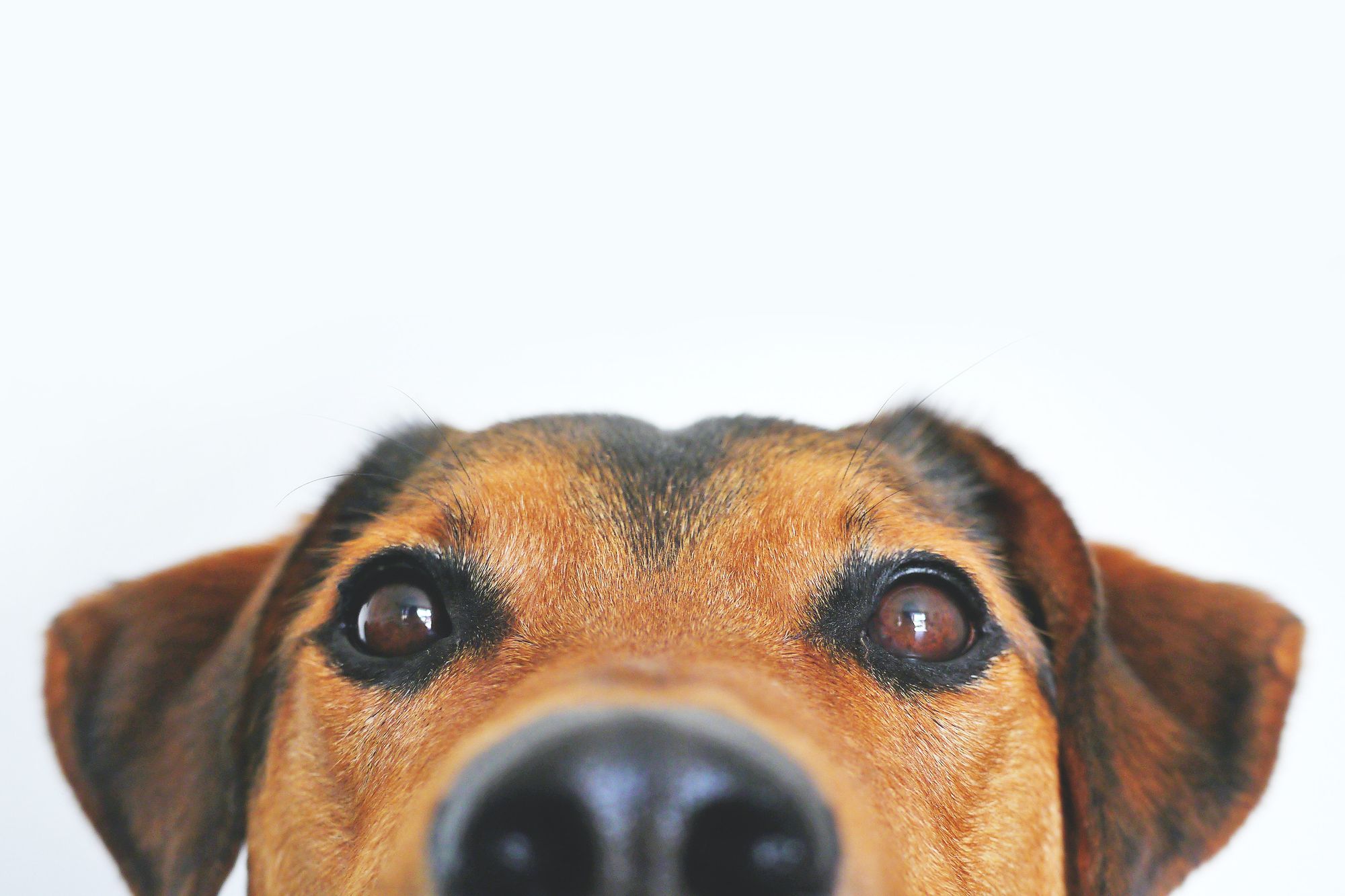
2. Avoid Trimming Too Close to the Eyes
When trimming around a dog's eyes, it is crucial to avoid cutting too close to the eyes to prevent injuries. Here are some steps to follow:
- Ensure the dog is calm and comfortable.
- Gently comb the fur around the eyes to remove any tangles or mats.
- Use small, dog-safe trimming scissors to carefully trim the excess fur.
- Avoid trimming too close to the eyes, leaving a safe distance.
- Observe the dog's reactions and ensure their safety throughout the process.
- Reward and praise your dog for their cooperation.
Pro-tip: If uncertain or uncomfortable, seek professional help from a groomer or veterinarian.
3. Use Styptic Powder if There is Bleeding
Using styptic powder is an important step if you notice any bleeding while trimming around your dog's eyes. Follow these steps to safely use styptic powder:
- Gently clean the area around the cut or bleeding.
- Take a pinch of styptic powder and apply it directly to the bleeding area.
- Apply light pressure for a few seconds to allow the powder to stop the bleeding.
- If there is bleeding, use styptic powder again or seek veterinary assistance.
- Observe your dog for any signs of discomfort or irritation.
- Remember to reward and praise your dog for cooperating during the process.
Use styptic powder if there is bleeding and make sure to follow these steps carefully to manage any small cuts or bleeding that may occur during eye trimming. If you are unsure or uncomfortable handling the situation, it's always best to consult a professional.
4. Seek Professional Help if Uncertain or Uncomfortable
If you are uncertain or uncomfortable about trimming around your dog's eyes, it is always best to seek professional help. Here are some steps to consider when seeking professional assistance:
- Research and find a reputable groomer or veterinarian experienced in eye trimming.
- Make an appointment and communicate your concerns and expectations clearly.
- Observe and ask questions about their technique and equipment.
- Ensure the professional uses gentle and safe practices to minimize stress and discomfort for your dog.
Remember, it's important to prioritize your dog's safety and well-being. Seek professional help if uncertain or uncomfortable can provide peace of mind and ensure the best outcome for your furry friend.
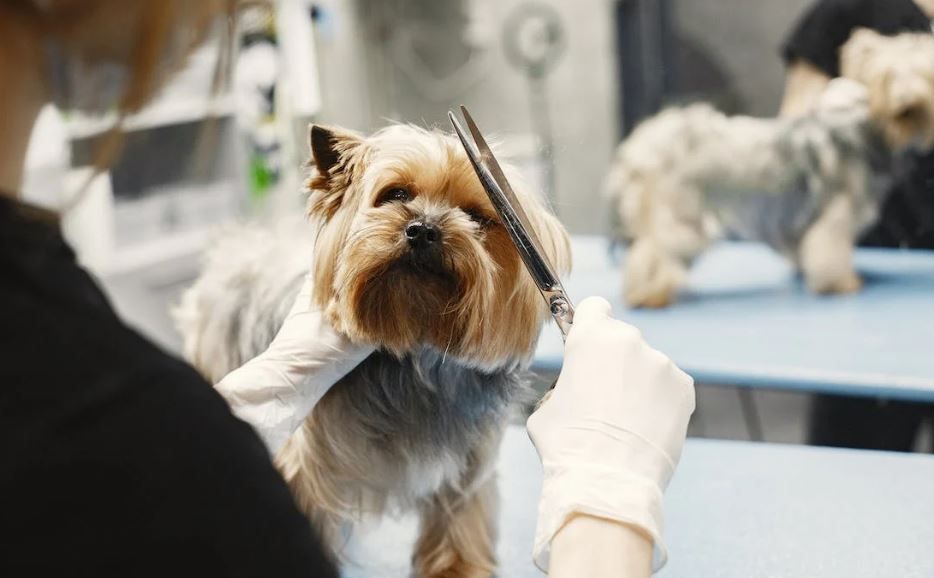
Rushing the Process
When trimming around a dog's eyes, it's crucial to avoid rushing the process. Instead, take your time to ensure the safety and well-being of your pet. Taking shortcuts or rushing can lead to accidents or injuries, causing unnecessary stress and discomfort.
- Preparation: Before you begin, make sure you have all the necessary tools, such as rounded-tip scissors and a gentle grooming brush, to ensure a smooth and safe trimming process.
- Patient approach: To create a positive association with grooming, start by introducing your dog to the process gradually. Reward them with treats and praise, demonstrating a patient and calm demeanor.
- Secure positioning: Find a quiet, well-lit area where your dog can comfortably sit or lie down during the grooming session. Providing a secure and peaceful environment can help them stay relaxed throughout.
- Trimming techniques: Use small, controlled snips to gradually trim the fur around your dog's eyes. Remember to take breaks if necessary to maintain a calm and relaxed state for your dog.
- Professional help: If you find the task too challenging or feel uncertain, it's wise to seek assistance from a professional groomer who specializes in trimming around a dog's eyes. Their experience and expertise can ensure the process is done safely and efficiently.
Always prioritize the safety and well-being of your dog throughout the grooming process. Remember, rushing can lead to unwanted accidents or injuries. Take your time, be patient, and keep your dog's comfort in mind.
2. Using Improper Tools
Using inappropriate tools when trimming around a dog's eyes can be hazardous and result in unintentional injuries. It is essential to utilize the appropriate tools specifically created for grooming, such as dog-safe trimming scissors, a fine-toothed comb, and dog-safe grooming clippers. These tools are designed to ensure safety and effectiveness, providing a seamless and stress-free grooming experience for both you and your dog. By using unsuitable tools, you are taking the risk of causing discomfort or potentially harming your dog. Prioritizing their safety and well-being means using the correct tools for the task.
3. Trimming Too Close to the Eyes
When trimming around a dog's eyes, it's crucial to avoid cutting too close to the eyes to prevent injury and discomfort. Follow these steps to ensure safe trimming:
- Prepare the environment: Find a quiet, well-lit area where your dog feels comfortable.
- Calm and comfort your dog: Gently reassure your dog and create a relaxed atmosphere.
- Gently comb the fur around the eyes: Use a fine-toothed comb to remove any tangles or knots.
- Use scissors to trim excess fur: Cut small sections of fur at a time, maintaining a safe distance from the eyes. Trim carefully to avoid trimming too close to the eyes.
- Optional - Use grooming clippers: If the fur is longer, you may use clippers for a more precise trim.
- Observe and ensure safety: Regularly inspect the trimmed area and make sure there are no injuries or irritation.
- Reward and praise your dog: After the trimming session, reward your dog with treats and positive reinforcement.
Remember, when trimming around the eyes, take your time, use proper tools, avoid getting too close to the eyes, and seek professional help if needed. Avoid rushing the process, as it can lead to accidents or discomfort for your dog.
Neglecting Regular Maintenance
Neglecting regular maintenance of trimming a dog's eyes can lead to several issues, including eye infections and vision problems. To avoid these problems, here are some important tasks to include in your regular maintenance routine:
- Make sure to regularly trim the hair around the dog's eyes to prevent it from obstructing their vision.
- Ensure that you clean the area around the eyes to remove any dirt or debris that may cause irritation.
- Regularly inspect the eyes for signs of redness, discharge, or other abnormalities.
- Don't forget to take your dog to the veterinarian for regular check-ups to ensure their eyes are healthy and functioning properly.
By neglecting regular maintenance, you put your dog's eye health at risk. So, make sure to prioritize these tasks to keep your furry friend's eyes healthy and well-maintained.
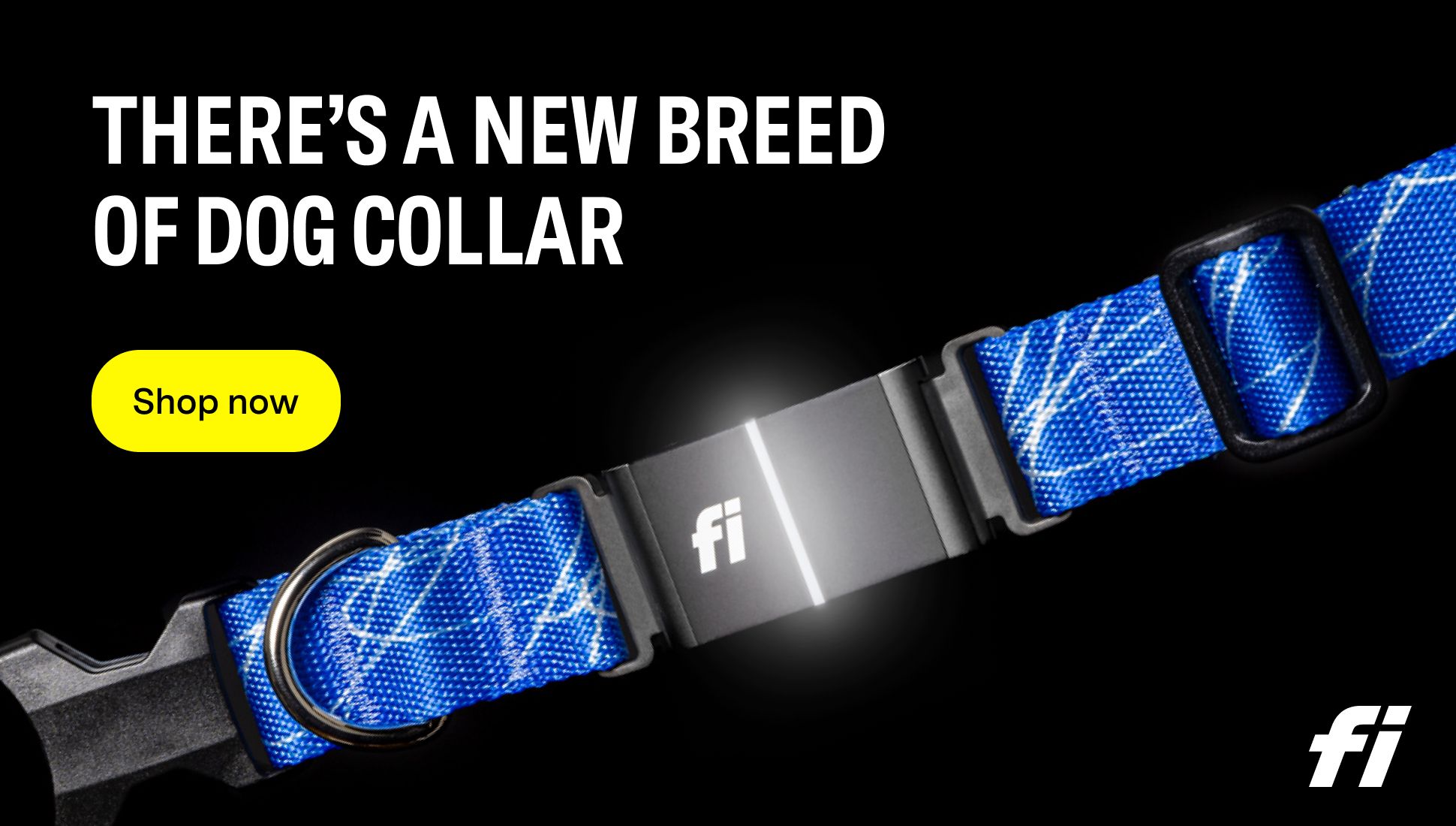
Some Facts About How to Trim Around a Dog's Eyes:
✅ Trimming around a dog's eyes can be challenging if the dog or owner is nervous or anxious.
✅ It is recommended to remove as much fur as possible from the eyes before starting the trimming process.
✅ Having a confident and steady hand is crucial to ensure a safe and precise trim around the dog's eyes.
✅ The owner's attitude and energy can influence the dog's response and behavior during the trimming process.
✅ If a dog has had a negative experience with trimming in the past, it may require additional positive reinforcement and conditioning before attempting it again.




